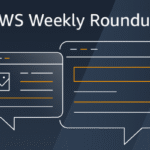A bad user experience on the website leads to high percentage of abandoned trolleys. Gamification, the process of applying gaming principles to online stores to support participation, can increase customer conversion and loyalty. Ecorce News spoke with Claspo about the useful ways of implementing these pop -up windows.
Gamification is a method that is quite popular among online markets and retailers. It includes the use of game principles on activated. Think about challenges, rewards or competing elements in online stores. This tactic is to support the customer’s obligation, participation and loyalty.
Using gamification to improve the user experience
Research in 2024 showed that 70.2 percent of all online shopping cars were abandoned. Most of these abandonment, which we have caused on this site with poor user experience. Gamification can be used to help customers located around the website to improve user experience.
However, it should be noted that in some boxes gamification can be categorized as a “dark pattern”, a design that consumers consumers buy or reveal more data into the impulsive mayor. The European Commission has already initiated proceedings against Tem last year because it investigated addictive proposals for the platform.
“Simplicity is key”
According to CLASPO, which helps online sellers to create widgets and pop -ups, is a key simplicity. Visitors must know what to expect and what interactions will get. In addition, it would pop up and other websites should be adapted.
“We have introduced proven procedures where widgets should appear”
“Fortunately, the years of testing and evaluating their results have helped us to establish proven procedures where your widgets should appear. There are triggers based on the customer’s use and phase of the customer’s way, jumping up at an optimal moment to a home that is most likely to be converted,” he says.
Behavior triggers
Claspo has the following tips for online sadlers who want to incorporate pop -up windows to include conversion:
- Time. Connect users after a specific duration on the page: After spending 30 seconds on ABSite or after 2 minutes inactive on the web
- Scroll. The pop -up windows are activated at 50 PIERNT in terms of page and show them the product’s quiz recommendations. Now to 75 percent and show them a scratched card with a reward if they signed for the newsletter
- Output interest. Find out when users are going to leave and present in the Last Chance menu: when the user moves the cursor to close the page or when they love the address bar. In these cases sellers can provide a special offer
- Action. React to specific user interactions, for example by clicking on a button or hovering over the element
Using the time spent on the website to increase the level of conversion
The company also distinguishes between the phases in which the visitor and the types of popping windows that should be used in each of them. There is an internship of awareness where online stores can implement fine and informative pop -ups for the first visitors to introduce this brand.
“Online retailers can use time -gentle offers to create urgency”
“Then there will be an internship where you can offer incentives such as discounts or exclusive offer to make the Hessitant users to transform. Finally, there is a decision -making internship. Online retailers can use time -sensitive offers to create urgentness for those approaching.”
However, visitors can also get tired from the face of pop -up windows on the website. Since Claspo has some ideas that can help with fatigue pop -ups:
- Space out jumping boots to take over stunning users with repeated interruptions. If your user has seen a welcome pop -up window, they will not show another for at least 30 seconds on the web.
- Limit the frequency of pop -up windows to maintain a positive experience. Depending on the session, it can maximize the maximum of one to visit or on a page or user.
- Make sure the pop -up windows will not interrupt the user’s critical tasks. You can try different trigger times (about 10 seconds compared to 30 seconds in place) to find out which results in a higher commitment.
- Testing and optimizing the starting points for different user segments. Show different pop -up windows for new visitors vs. Returning customers or stunned users. those who are about to leave.
Personalization to manage customer’s obligation
Users use user data such as browser history, cookies or past purchases, as well as pop -ups. Personalized pop -up windows feel useful, disturbing. With a greater customer commitment, online stores can achieve a higher conversion rate.
(Tagstranslate) Europe



